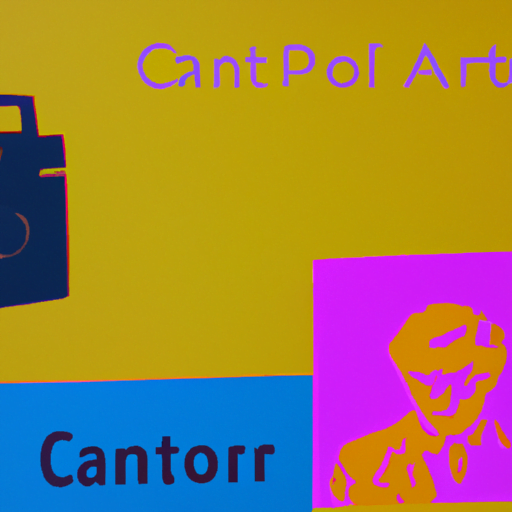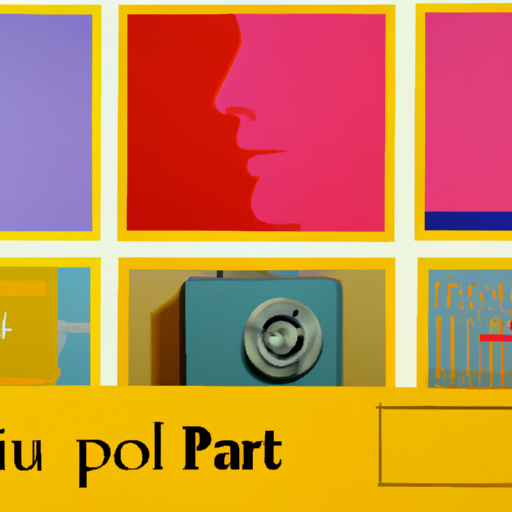
-
Table of Contents
- Card-based Interfaces: The Future of User Experience
- What are Card-based Interfaces?
- The Benefits of Card-based Interfaces
- 1. Visual Appeal
- 2. Information Hierarchy
- 3. Scannability
- 4. Flexibility and Responsiveness
- 5. Interaction and Engagement
- Examples of Successful Card-based Interfaces
- 1. Pinterest
- 2. Google Now
- 3. Trello
- Case Studies: The Impact of Card-based Interfaces
- 1. Airbnb
- 2. Medium
- Conclusion
Card-based Interfaces: The Future of User Experience

With the rapid advancement of technology, user interfaces have evolved significantly over the years. One of the most popular and effective interface designs that has emerged in recent times is the card-based interface. This article explores the concept of card-based interfaces, their benefits, and their impact on user experience.
What are Card-based Interfaces?
Card-based interfaces are a design pattern that organizes information into individual cards, resembling physical playing cards. Each card contains a specific piece of information or functionality, making it easy for users to scan and interact with the content. These cards can be arranged in a grid or stacked vertically, depending on the design and purpose of the interface.
Card-based interfaces gained popularity with the rise of mobile devices and responsive web design. They provide a flexible and modular approach to displaying content, allowing for easy adaptation to different screen sizes and orientations. This adaptability makes card-based interfaces ideal for both mobile and desktop applications.
The Benefits of Card-based Interfaces
Card-based interfaces offer several advantages over traditional interface designs. Let’s explore some of the key benefits:
1. Visual Appeal
Cards are visually appealing and can be customized to match the brand identity or theme of an application. They allow for the use of images, icons, and typography to create an engaging and visually rich user experience. The use of visually appealing cards can capture users’ attention and encourage them to explore further.
2. Information Hierarchy
Card-based interfaces provide a clear and structured way to present information. Each card represents a distinct piece of content, making it easier for users to understand the hierarchy and navigate through the interface. By organizing information into cards, designers can prioritize and highlight important content, ensuring that users can quickly find what they are looking for.
3. Scannability
One of the key advantages of card-based interfaces is their scannability. Users can easily scan through a set of cards, quickly identifying relevant information or actions. This makes card-based interfaces particularly effective for applications with large amounts of content, such as news websites or social media platforms.
4. Flexibility and Responsiveness
Card-based interfaces are highly flexible and responsive, making them suitable for various devices and screen sizes. The modular nature of cards allows for easy rearrangement and adaptation to different layouts. Whether users are accessing an application on a smartphone, tablet, or desktop, the content can be displayed in a visually pleasing and user-friendly manner.
5. Interaction and Engagement
Cards can be interactive elements, allowing users to perform actions such as swiping, tapping, or dragging. This interactive nature enhances user engagement and provides a more immersive experience. For example, a card-based interface can enable users to swipe through a deck of cards to view different products or articles.
Examples of Successful Card-based Interfaces
Several popular applications have embraced card-based interfaces and achieved great success. Let’s take a look at some notable examples:
1. Pinterest
Pinterest, a social media platform, utilizes a card-based interface to showcase images and content. Each pin is represented as a card, allowing users to easily browse and save content of interest. The card-based design enables Pinterest to display a vast amount of content in a visually appealing and organized manner.
2. Google Now
Google Now, a personal assistant application, uses cards to present personalized information to users. These cards display relevant information such as weather updates, upcoming appointments, and news articles. The card-based interface allows users to quickly glance at the information they need without overwhelming them with excessive details.
3. Trello
Trello, a project management tool, employs a card-based interface to represent tasks and projects. Each task is represented as a card, which can be moved across different lists or boards. The card-based design makes it easy for users to visualize and manage their projects, enhancing collaboration and productivity.
Case Studies: The Impact of Card-based Interfaces
Several case studies have demonstrated the positive impact of card-based interfaces on user experience. Let’s explore a couple of examples:
1. Airbnb
Airbnb, an online marketplace for accommodations, redesigned its interface to incorporate a card-based layout. The new design allowed users to easily browse through listings, view high-quality images, and access essential information. As a result, Airbnb experienced a significant increase in user engagement and bookings.
2. Medium
Medium, a popular blogging platform, adopted a card-based interface to improve the reading experience for its users. The new design focused on presenting articles as cards, making it easier for readers to discover and consume content. The card-based interface led to a substantial increase in user retention and article views.
Conclusion
Card-based interfaces have revolutionized the way we interact with digital content. Their visual appeal, information hierarchy, scannability, flexibility, and interactivity make them a powerful tool for enhancing user experience. Successful applications like Pinterest, Google Now, and Trello have leveraged card-based interfaces to provide engaging and user-friendly experiences.
As technology continues to evolve, card-based interfaces are likely to become even more prevalent. Their adaptability to different devices and screen sizes makes them an ideal choice for the mobile-first era. By embracing card-based interfaces, designers can create intuitive and visually appealing experiences that captivate users and drive engagement.
So, whether you’re designing a mobile application, a website, or an interactive dashboard, consider incorporating card-based interfaces to deliver a seamless and delightful user experience.
